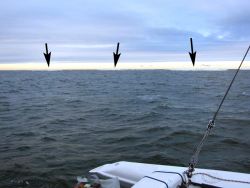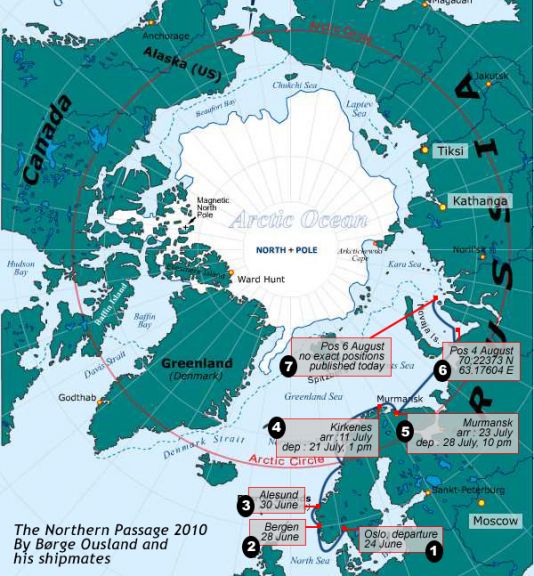First encounter with ice
Published on 06.08.2010 - The Northern Passage 2010
After going through the Strait of Yugorsky and leaving Europe behind them, the three sailors are now sailing on the open Kara Sea. They have just encountered their first pack ice debris. Everything on board is OK.
It was on 3 August that Borge and his two shipmates passed the end of the Strait of Yugorsky and finally reached the Kara Sea. This moment of the adventure is important for many reasons.
One: they have in a way left Europe behind them because the Kara Sea is regarded as a natural border of the great Siberia. Two: they have seen their first pack ice debris, which is only the beginning of another adventure. Three: they have left a marine area that is still affected by the Gulf Stream (the Barents Sea) to enter another one -the Kara Sea- for its part affected by the Arctic ice-barrier, its currents and its weather.
The expedition’s report dated 4 August, furthermore, said the following: "According to our Russian crew member, Stas, we’re now no longer in Europe, but have entered Asia. Now that we’re once again heading further north, it’s getting noticeably colder. Suddenly it’s become quite a palaver to get dressed for a four-hour watch in the exposed cockpit. To withstand the cold and the weather requires layers of wool, hoods, a survival suit, thick mittens, Muck boots, a lifejacket and an MOB alarm (man-over-board). However, as soon as we’re dressed, we’re eager and ready for action! ..."
The following day, on 5 August, another interesting piece of information was published: "This is a good time to reflect on the enormous distances of the Northern Sea Route, the demanding shipping lane from the Atlantic to the Pacific Ocean that goes along Russia’s Arctic coast, and along the vast coast of Siberia. Along the straits and passages we see evidence of the considerable investments that were made during the early Soviet years, to establish stations and settlements in order to populate the northern territories, and to establish regular shipping transportation.
Today most of the stations are abandoned, while ships still sail along this mostly-unpopulated coast. Much of the ship traffic is a consequence of the oil and gas activities taking place off the Yamal Peninsula, and elsewhere in the Arctic. Sergey Dayneka and the crews on the Atomflot icebreakers are really helpful, providing excellent service to all ships – including a tiny Norwegian trimaran! ..."
At this moment, the Northern Passage trimaran is crossing the Gulf of Ob (Obskaya Guba in Russian); the sea is rough because of the fairly shallow water and on account of the wind that is blowing at 7/8 metres per second. The temperature is 5 degrees, there’s a bit of fog and the weather is overcast.
A interesting visit : our gallery made of some of Borge Ousland's most oustanding shots since he left home.












